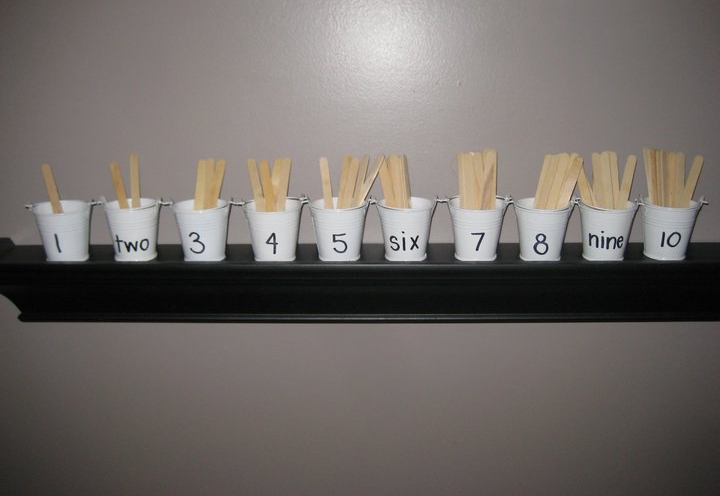I am always encouraging you to find materials in your house for teaching opportunities. Why?
1. I like to save money!
2. You are more likely to do the activity if you can access the materials right away.
3. It is more meaningful.
4. Did I already say that I’m a penny pincher?
Well, here is a GREAT idea from A Mommy Teacher named Casey and you probably even have the materials in your house already (because you can always substitute), but if not she gets her materials for this activity at the Dollar Tree….Penny pinchers think alike!
From Casey:
“This is our new math activity that James and I do. I bought all of these little tins at the Dollar Tree 3 for $1 in the wedding favor section. So, I bought 12 for $4. Then we got 1000 Popsicle sticks at Hobby Lobby for like $3. We could have used a 40% off coupon if I had it, or waited until they went on sale for 50% off to get them cheaper, but I was impatient.
 With a permanent marker, I wrote the numeral on one side, and spelled out the number on the other. We do lots of different things with these…
With a permanent marker, I wrote the numeral on one side, and spelled out the number on the other. We do lots of different things with these…
– put them in numerical order
– put the correct number of Popsicle sticks in each of the tins
– add (he can see the quantity of sticks then count them all to see how many he has)
– subtract
– count by 2s
– find the missing number in the number line (put out the tins for 1…2…_…4… and find which number is missing)
– count backwards
– read the words for the numbers (have all of the numbers facing us, then turn one number around showing the word so he can start recognizing the spellings)
– count by 2’s
Things we do with the popsicle sticks:
– count by 5’s
– count by 10’s
– draw things in sand or rice
– use them to make squares, rectangles, triangles or letters with straight lines
Hitting lots of math standards for only $7 w/o waiting for stuff to go on sale ”
Thanks again my Friend!

